Shotgun Shooting
Ptarmigan hunting - Rough hunting in the Swedish mountains
Ptarmigan hunting in the Swedish mountains offers not only fantastic hunting opportunities but also some of the World’s greatest outdoor experiences, all together for a very low price. To have a successful hunt, however, you need to know the ins and outs of this special type of hunting.
The ptarmigan is a member of the pheasant family and is an Arctic bird adapted to life in the barren mountain tundra. They molt and change their plumage to camouflage themselves. They are brown speckled in summer and almost completely white in winter. The willow ptarmigan is slightly larger (about 570 g) than the rock ptarmigan (about 530 g). The rock ptarmigan usually inhabits higher, rockier terrain than the willow ptarmigan, so it is mostly the willow ptarmigan that are hunted using bird dogs, such as pointers.
How does the hunt proceed?
A specialised pointing breed of dog is used for the hunt. There are many different breeds, but the common ones include the German and other pointers, the English and Irish setters, and the Brittany. The dog is released on the mountain and then searches in a zigzag pattern ahead of the hunter. The search range varies between the breeds, but they beat between 100 and 500 metres from the hunter.
When the dog gets the scent of the bird, it approaches and stands upright with its muzzle pointing towards the bird's location. On a given command, the dog quickly steps forward to flush out the bird. Once the ptarmigan has taken flight, the dog should stand still to leave the hunter a free shot. The dog then retrieves the bird. The ptarmigan’s normal behaviour when faced with a dog is to crouch. This means sitting absolutely still, crouching into the ground to remain undetected. They are well camouflaged and very difficult for us to spot. At the beginning of the season you will find whole family groups together and they usually crouch down very hard. Later in the autumn as the leaves fall, the ptarmigan can be very frail and difficult to get close to, even if the dog performs perfectly. These days can be very frustrating as the birds remain beyond the shotgun’s range.
Where can you hunt?
Sweden, and more specifically the three mountainous northern counties of Jämtland, Västerbotten and Norrbotten, is very permissive when it comes to hunting on public land. Day permits are available for small game hunting for large areas and the prices are relatively modest compared with south Sweden and elsewhere in Europe. A day permit costs between 275 and 500 SEK.
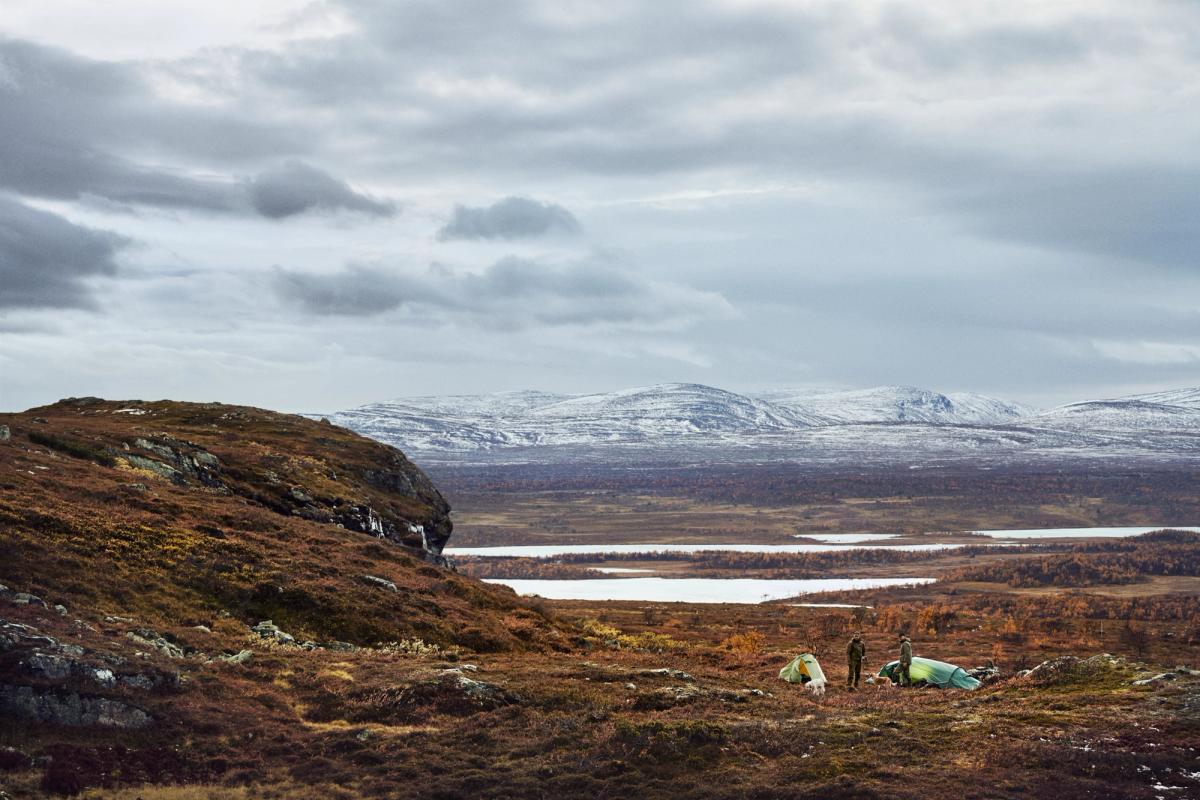


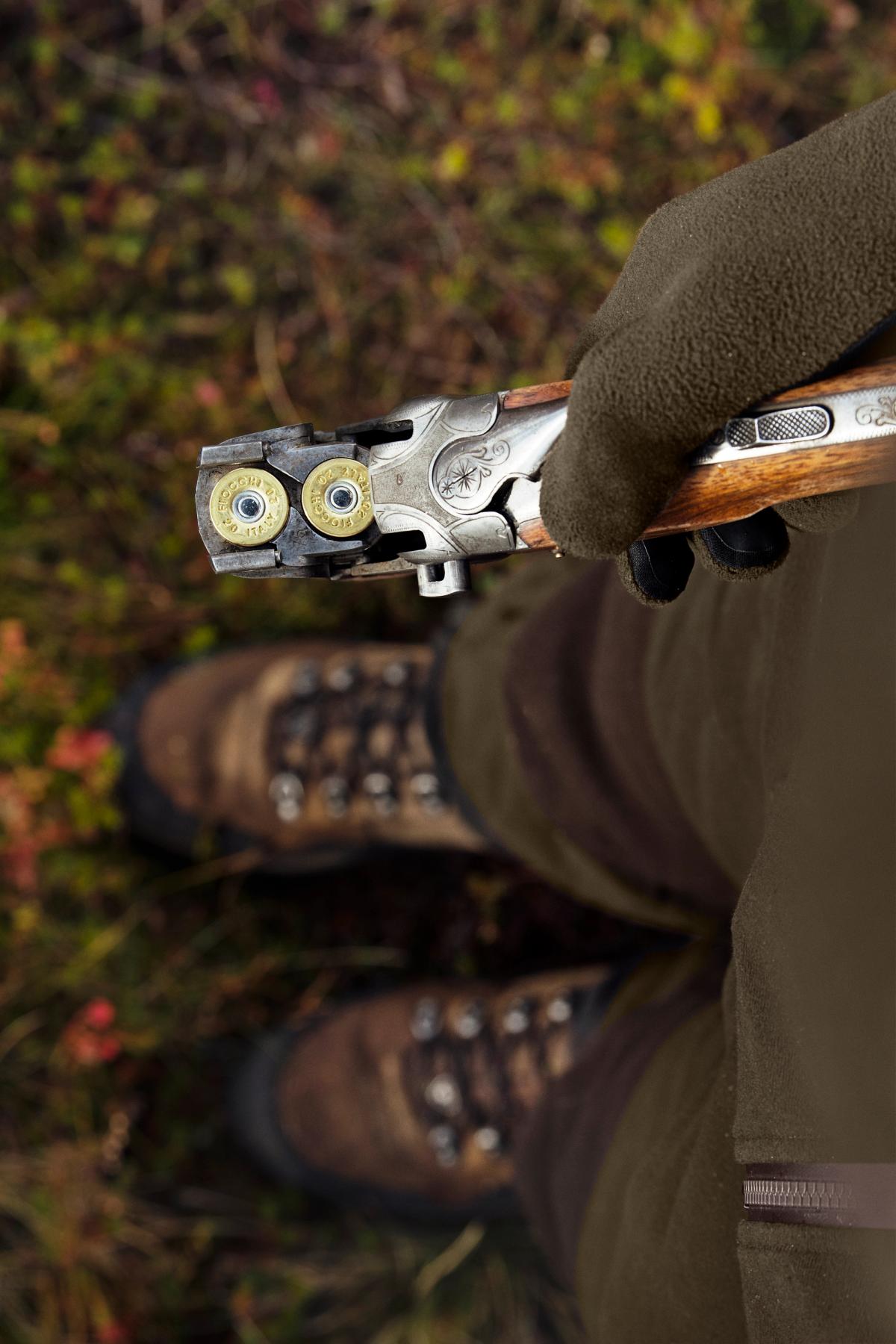
// WHERE AND WHEN //
Preparation. Clean the field mushrooms of soil under water and vacuum-seal with a splash of water. Steam at 80 degrees for approx. 12 hours. Remove the mushrooms and drain until the liquid is reduced by half. Pluck the pheasant, gut it and clean it. Cut the breasts off and vacuum-seal with a small pat of butter. Clean any dirt off the wood blewits, chanterelles and hedgehog mushrooms using a brush. Peel the cloves of black garlic and blend for about 10 minutes with 10 g of sherry until completely smooth. Soak the dried morels and drain the liquid from them once they are soft. Finely chop and fry the mushrooms. Clean the wild garlic and remove the white skin on the bottom. Use a small knife to cut a cross into the base of the chestnut. Heat the oil to 180 degrees and fry the chestnut for about 5 seconds. Wearing gloves, peel the chestnut using a small knife to remove the outer and inner shells. Blend 50 g of butter and 10 g of sherry to a uniform consistency. Blend the dried blackcurrants to a powder. Heat the reduced mushroom bouillon and blend in 50 g of cold butter. Cook through for 10 minutes with the chopped morels and pass through a fine sieve or cloth. Salt to taste. Place the vacuum-sealed pheasant breasts in a bain marie at 50 degrees for about 30 minutes. Just before serving, remove them from the bag and flash fry on each side.
Presentation. For presentation, sprinkle blackcurrant powder on the plate. Place three slices of breast in the middle, and then arrange the fried mushrooms, garlic and morels. Finally, garnish with a couple of salted redcurrants, black garlic purée and chestnuts. Let them rest for 2 minutes before cutting them to a suitable size. Cut across the breast! Fry the mushrooms in a hot pan with the sherry butter. Add the chopped fresh morels and wild garlic. Cut the chestnut into very thin slices using a mandolin.
You do not need to hire a guide and you can take your own dog along. It is essential that the dog will not chase reindeer. The first three weeks of the hunt are reserved for Swedish residents and people with a close connection to the country. The grounds are then opened to foreign hunters.
In Jämtland, there are also quota areas, where there is a lottery that you have to sign up to in spring. You can camp in the mountains, but it is also possible to stay in a mountain cabin belonging to the STF (Swedish Tourist Association) or one of the private owners here. Of course, these are best booked in advance. You can fly out to certain areas, but many areas have a flight ban. You can check where you can and cannot fly with some of the air service companies that offer taxi flights for hunters.
Further information. Information in English and all the Nordic languages concerning applicable regulations, area maps, booking and payment can be found on the County Administrative Board's website at www.natureit.se. For accommodation, you can contact the Sami village that herds reindeer in the area. They sometimes have cabins for rent. You can also visit the website of STF, the Swedish Tourist Association, at www.svenskaturistforeningen.se. There is always a room where you can stay with a dog at their various mountain facilities.
Game species. When hunting in the mountains, there are primarily two species on the menu: willow ptarmigan (Lagopus lagopus) and rock ptarmigan (Lagopus muta). In addition to these, the capercaillie (Tetraou urogallus), black grouse (Lyrurus tetrix), hazel grouse (Tetrastes bonasia) and other small game animals like the hare, fox and beaver can also be hunted when permitted under the regulations. It is essential to read about which species it is permitted to hunt. Species that are legal to hunt during their open season are not necessarily legal to hunt on public land. Species that may not be taken include sea birds, roe deer and, in Jämtland, woodcock.
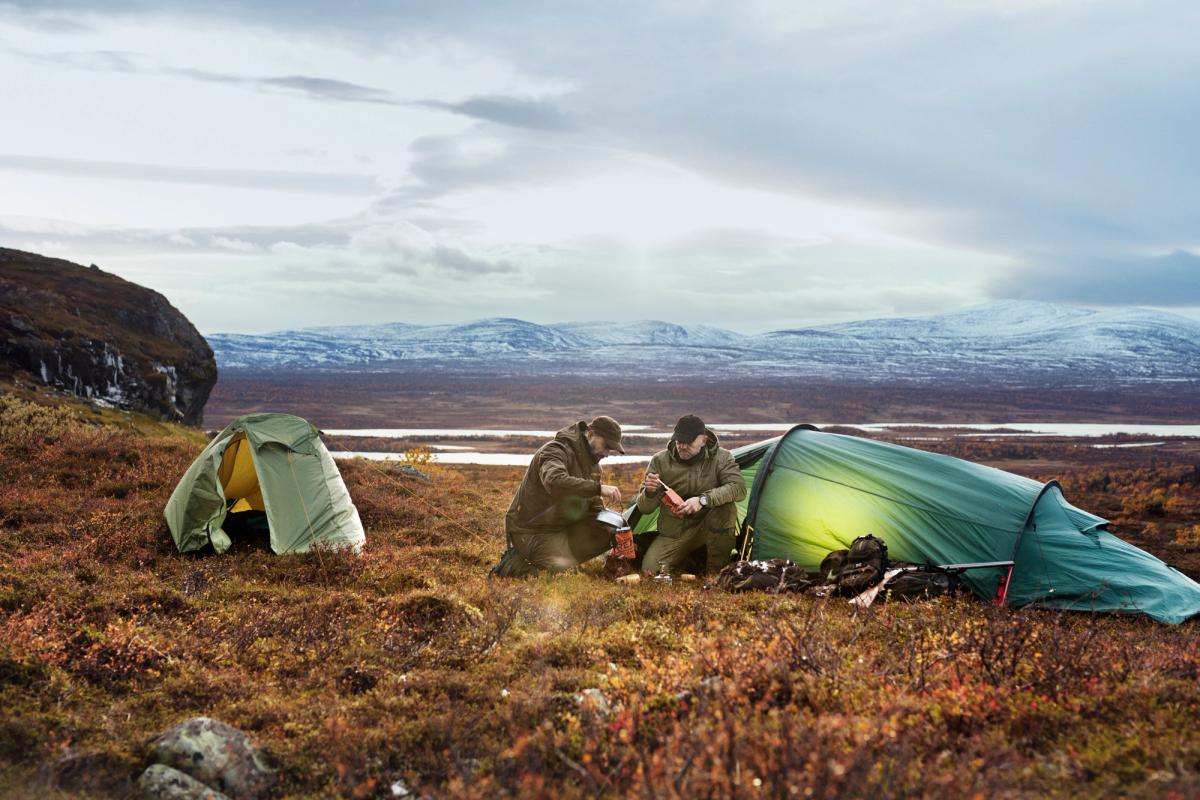
// THE SEASON //
Hunting season. For the ptarmigans, the season opens on 25 August. In Jämtland, the permit lasts until the end of February and in Västerbotten and Norrbotten, the season closes on 15 March. Both cocks and hens of capercaillie and black grouse can be taken until 15 November. After that, only cocks can be taken, until the end of January. The Swedish hunting timetables give the relevant seasons for other species.
Clothing. When hunting in the mountains, you need to be aware that the weather is very changeable, and this should determine your choice of equipment. Membrane-equipped clothing are an excellent choice for this type of hunting. With a windproof and waterproof hunting suit, you also reduce your packing weight, since you save on extra rainwear.
Being able to tighten your trouser legs around your boots is important for wading through brooks and streams while keeping your feet dry. Vents in the trouser legs are also important for maintaining a constant body temperature.
Quick-drying clothes are an advantage if it rains for several days. Large, well-placed pockets for easy access to extra ammo, a cup or a GPS also make life easier when hunting. A jacket with an adjustable hood is essential for good protection from rain, snow and strong wind. A sturdy pocket to hold yellow-tinted or clear glasses or ski goggles in late autumn and winter is also useful. It can be very wearing to walk with the rain or snow constantly in the eyes.
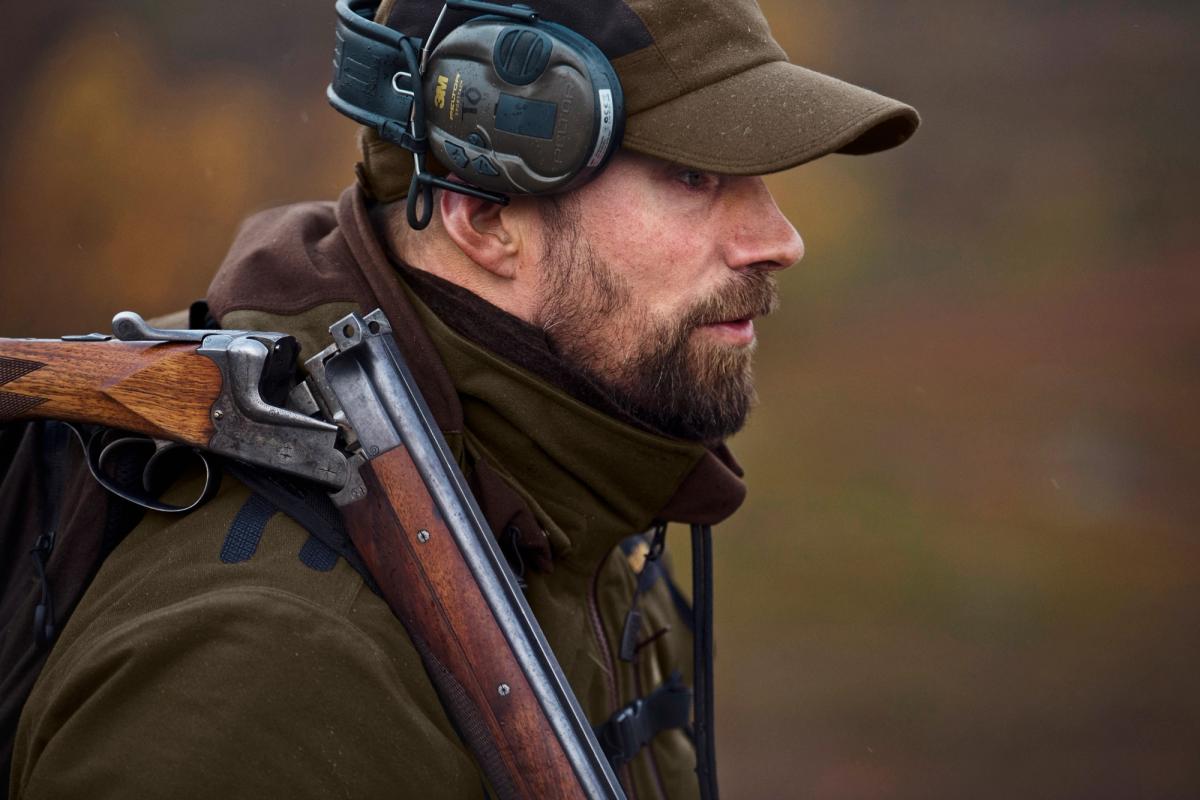
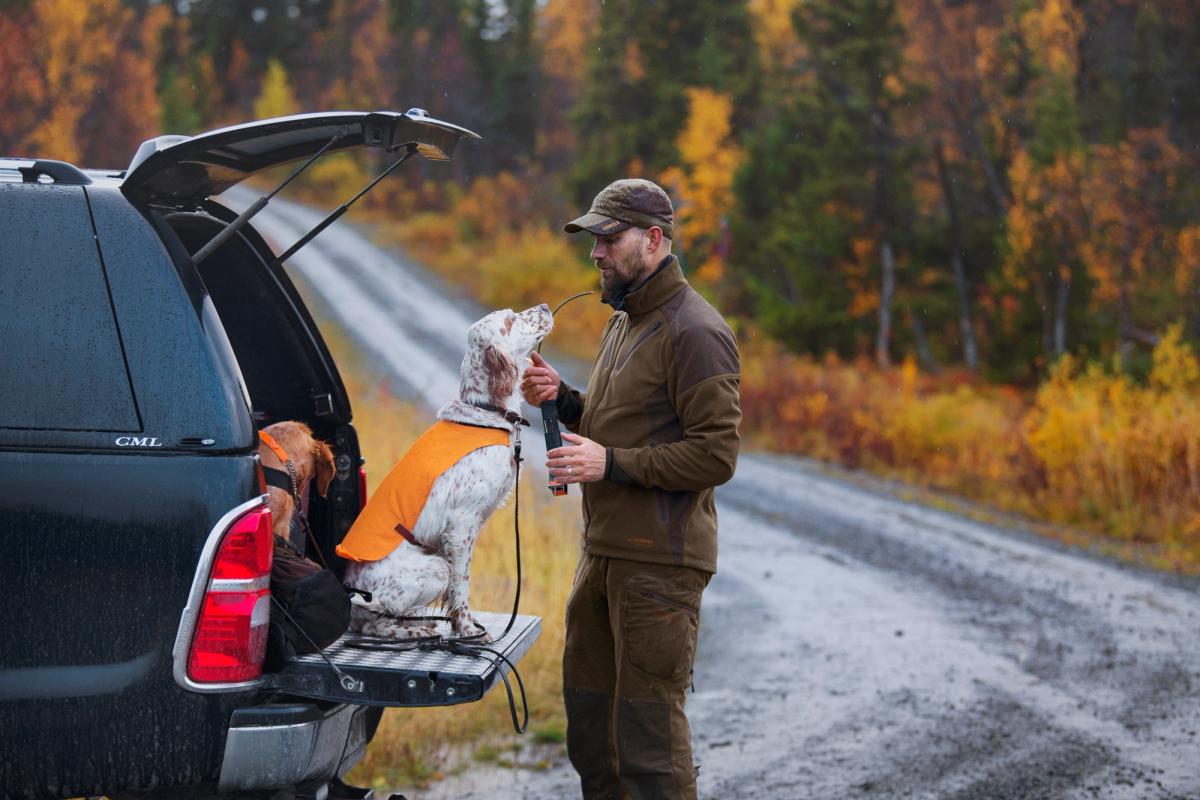
The layering principle is key. Woolen undergarments are definitely preferable. Having different thicknesses of base layers allows you to accommodate different conditions. Remember that you should start out feeling a little cold. Boots are one thing you cannot afford to skimp on. They need to be sturdy, with a non-slip tread and stiff enough at the ankle to reduce the risk of a sprain. You should also break them in well, before taking to the mountains. Taking extra clothing with you is highly recommended – an additional base layer and a compressible insulating jacket, for example. It is good to have a change of clothes if you get hot, or simply to relax in over lunch. Your rucksack should also contain a hat and gloves for when the weather changes.
Rucksack. A well-designed, properly adjustable rucksack is a must for any outing. The ideal carrying system has a wide hip belt, and broad, but not thick, shoulder straps, which allow you to vary the load points during the day and to shoot without removing the pack. It is very advantageous if the rucksack contains a weapon holster that accommodates both shotguns and rifles with sights. Partly because it means you can use the rucksack for different kinds of hunting, partly because it saves the strain of having one’s gun slung over the shoulder all day. This is clearly worth the little extra cost. The holster also frees up your hands when you are hiking.
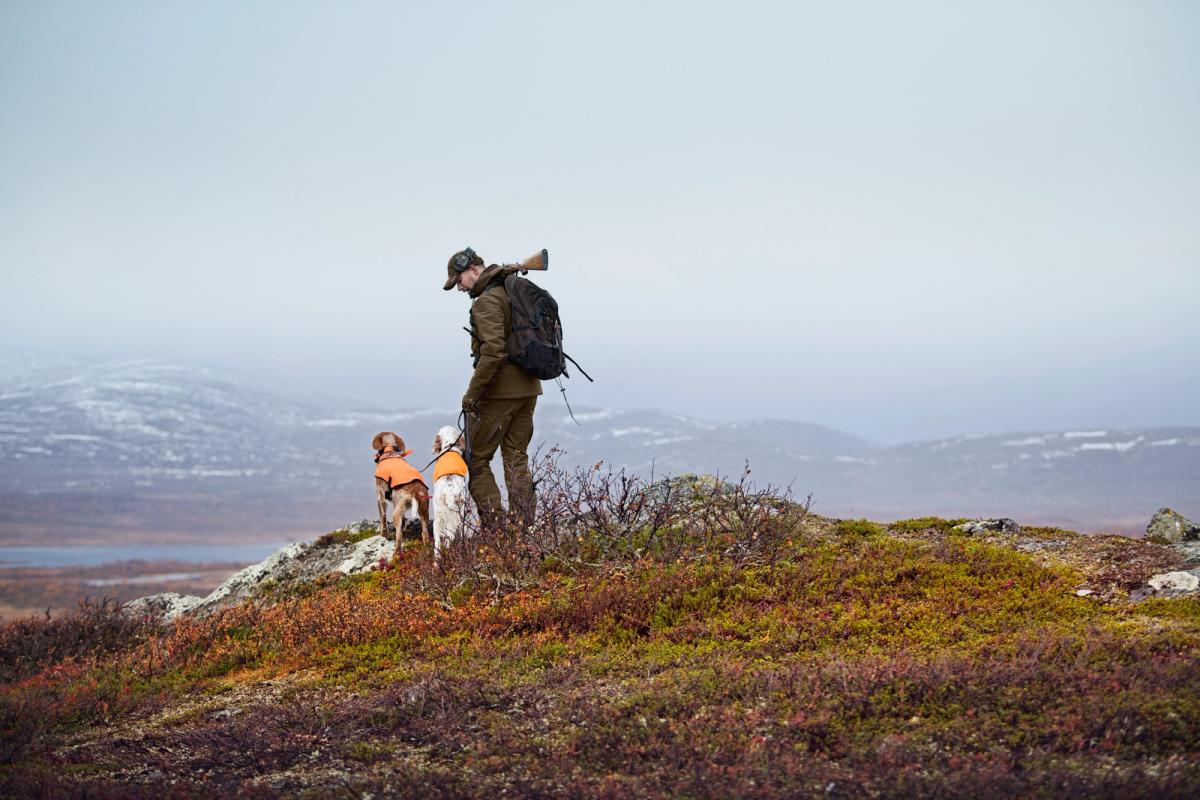
One often neglects to drink properly. You should keep a folding cup in your pocket. If the rucksack is designed to accept a Camelbak, this simplifies things, especially when you reach the dog after a hard climb and there is no stream nearby. Without a Camelbak, you can simply keep a water bottle in one of the ruksack’s net pockets. A good rucksack for hunting in the mountains should also be ready for carrying home your kill. Naturally, the rucksack should contain grouse snares or net bags.
DO'S OF PTARMIGAN SHOOTING
- You are required to have a permit for the hunting area, a national hunting card and a license for your gun.
- In the mountains, the weather can change quickly. Be prepared, with extra clothing, a map and compass, and some extra food.
- Even if you have mobile coverage in the area you intend to hunt in, it is good to have an emergency transmitter preferably with GPS and text messaging function.
- Make sure you notify someone of your intended whereabouts in the mountains.
- Check your equipment before you set out. Even a broken tent pole or rucksack can have serious consequences.
- If you are going to camp, choose your campsite carefully. Strong winds aren’t the only hazard. In heavy rains, streams can rise very quickly and if
- you are camping close to one, you can quickly get flooded out.
- The moose hunt starts on the first Monday in September and after that you need to check with the relevant hunt master where you can hunt. There is normally information available on the hunting permit or the County Administrative Board's website as mentioned above. A lot of areas are unavailable
- during the first weeks of the moose hunt.
- Last but not least: Always keep safety in mind. No ptarmigan is worth a shotgun accident.
DONT'S OF PTARMIGAN SHOOTING
- Don’t skimp on food. A hungry brain makes bad decisions and you will also need more energy than usual.
- Anything you bring with you into the mountains, you should also take home with you. Don’t leave your rubbish in the mountains. It is your passport to Dante's Inferno!
- Respect the fact that there are both people and animals who do not appreciate hunters and hunting. Don’t go near gatherings of reindeer and do not shoot near hiking trails or cabins where people are present.
- Don’t go ptarmigan hunting without a first aid kit. Both you and your dog could get hurt.